Growing intelligent or smarter cities
One city that offers a glimpse of a better future is Portland Oregon, which is widely known among urbanists for pioneering the principles of ‘Smart Growth’. I was particularly keen to return to Portland to see how it had developed since I visited it fifteen years earlier, since when it has extended its Metropolitan Area Express (MAX) system to link through to the railway station and beyond, and largely completed the Pearl Quarter. Portland is cited as a model city by urban experts such as Bruce Katz, and its slogan is Keep Portland Weird. A set of principles that includes Transit Oriented Development (TOD) and Tax Increment Financing (TIF) has been promoted by the Congress of New Urbanism (www.cnu.org), and has influenced my own reports, for example on land assembly for the Greater London Authority.
I was fortunate in having arranged to meet up with architect planner Charles Kelley, a principal in ZGF Architects which employ 700 in six offices dedicated to sustainability. Esther and I were able to travel out to the suburbs on MAX as well as around the city centre on the separate streetcar or tram system. An excellent book on the city’s evolution, purchased from Powell Books in the heart of the regenerated Pearl Quarter, provided fascinating insights into how cities can change through community or grassroots pressures.
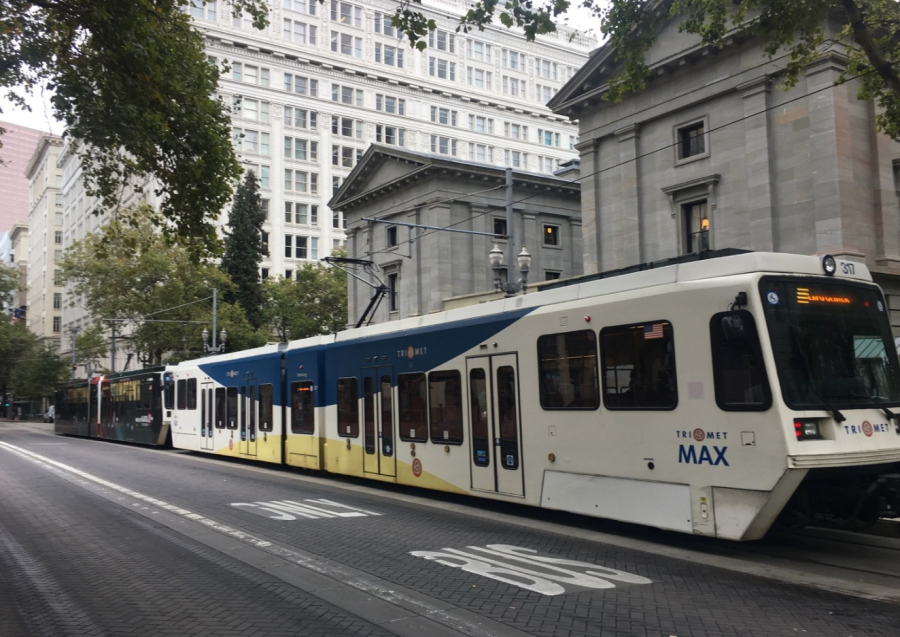
Portland’s transformation
All along the North American Westcoast strong environmental pressure groups have largely preserved the qualities of the coast and the nearby wooded hills. However, this has often been at the expense of releasing land for development including housing, commercial and industrial uses, except where occasionally new developments have been opened up through investment in rapid transit. Portland was a forerunner in seeking alternatives to the private car, and offers many lessons for other mid-sized cities.
Portland, the largest city in Oregon with a population of 650,000, is regarded by many urbanists as exemplary and offers residents an unspoilt mountain setting only 50 miles from the sea. Properties there cost 20% less than their equivalents in Seattle or San Francisco. Its earlier history of conservatism included racist restrictions on owning property as late as 1972. It also had a reputation for a lively nightlife. Faced with the pressures of urban sprawl, the State of Oregon used planning laws to protect farms and forests through a unique state-wide ordinance that established development goals for land across the state. This led to the formation of growth boundaries around the major urban areas that were administered by local government to achieve community-oriented goals. Today a city, once associated with corruption is now known for its progressive politics and environmental achievements. The story of change is inspiring, and possibly replicable.
The transformation began when the City was faced with losing federal government grants unless it improved its air and water quality to comply with nascent EPA policies adopted in 1970. ‘The city, business interests, and the local community configured new policies and strategies to change the form of the city, aiming to make Portland a healthier place to live.’ [1] Later local opposition to a five mile extension of a freeway that would have demolished fine old buildings, required something different. With a new 32 year old Mayor Neil Goldshmidt, the city engineered the Metropolitan Area Express or MAX.[2] This was an alternative to the abandoned Mt. Hood Freeway who’s proceeds were uniquely repositioned to fully pay for the first leg of the MAX, between Gresham and Portland. This is a 60 mile long light rail system, built in six stages, that draws four counties together and reduces vehicle miles travelled.
The City has applied Transit Oriented Development (TOD), especially in the dense Pearl River District but also in development areas such as along the main river. It used Tax Increment Finance to support new lines, such as the extension out to the railway station and beyond. This involves issuing bonds to private investors based on calculations that the increases in property values will generate enough extra funds to service and repay the debt over a period of twenty or more years. Negotiations over Floor Area Ratios (FAR) are used to get developers to fund public amenities such as parks, and transportation systems such as the first leg of the tram loop
The environmental benefits have been well-documented through research, and have led to an EcoDistrict Protocol, which forms a model for other Smart Growth to Smart City initiatives. For example, old buildings have been conserved and upgraded in many neighbourhoods, thanks to ‘constructive activism’ and community engagement since 1976. The Pearl District is exceptional, with its highlight being a very large bookshop in the centre which forms an excellent meeting point. Planning has been undertaken by the Pearl District Neighourhood Association, resulting in mixed use developments with 27% affordable units.
Pre-development strategic planning has supported multiple development agreements, resulting in mixed use developments, such as the Pearl District, with 27% affordable units. Another example is a fine new ‘eco quarter’ which has been developed along the South Waterfront, served by both the streetcar or tram and MAX. A lively arts scene extends along main roads such as Hawthorne, providing a multitude of bars and places to eat. Happy Hour at the top of a commercial building overlooking the city draws in people from the surrounding area. In Portland there are some 95 neighbourhoods in five main sections, creating many diverse places in which to live.
The local government’s Population Strategy has combined public transport, neighbourhood revitalisation and downtown planning. Cooperation not competition has been reinforced by citizens voting for bonds to fund improvements. The ‘sawdust aristocracy’, with their inherited wealth from logging, no longer control the town. Portland has consequently succeeded in growing employment by 2% a year, while the residential population rose by two thirds over a 30 year period, with the central area almost matching the suburbs. Open source modelling has been used to show how pedestrian oriented development can cut travel times. So successful has the model, with its commitment to sharing good practice, that it is being exported to other cities, including in Japan.
Portland’s positive plans for what I call Smarter Urbanisation have enabled a diverse range of people to live close to the historic centre. The city has conserved and adapted old buildings that in other cities might have been demolished. In the process they support a variety of interesting independent shops and bars, as well as a superb public transport system. Therefore, the centre or downtown area is now very walkable, and there are a variety of neighbourhoods to choose from. Careful zoning makes it possible for manufacturing to thrive, serving other businesses along the West Coast. While there is still plenty of scope for improvement, such as intensifying development along the transit lines out of the city, Portland has struck a balance between social, environmental and economic growth.

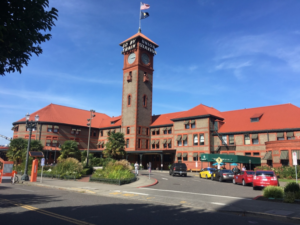

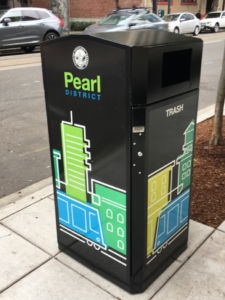

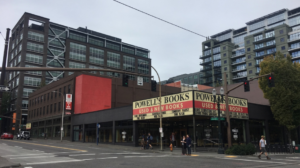
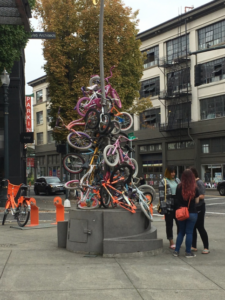
Great to have a positive story for once.
<> Do we know what this model is, and how to access it?
The model of Smart Growth, which Portland has applied so well, involves developing land around stations on the Metropolitan Area Express (or Transit Oriented Development).. Extensions to MAX have been funded through Tax Increment Finance, that is raising bonds or fixed interest loans, secured by the expected proceeds from increased property taxes. The model works because proactive planning focuses development in the central area, and prohibits peripheral development (helped by Oregon’s green belt).
The case study is written up in my Capital Gains report for the GLA, but may be available through the Congress for New Urbanism, http://www.cnu.org